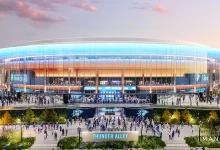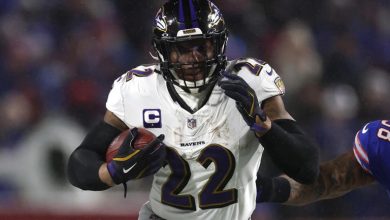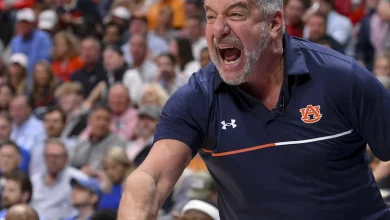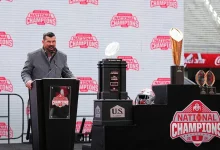The Arizona Cardinals are undergoing a notable decline, confronting multiple issues and difficulties that have greatly affected their performance and destabilized the team’s overall stability and effectiveness.
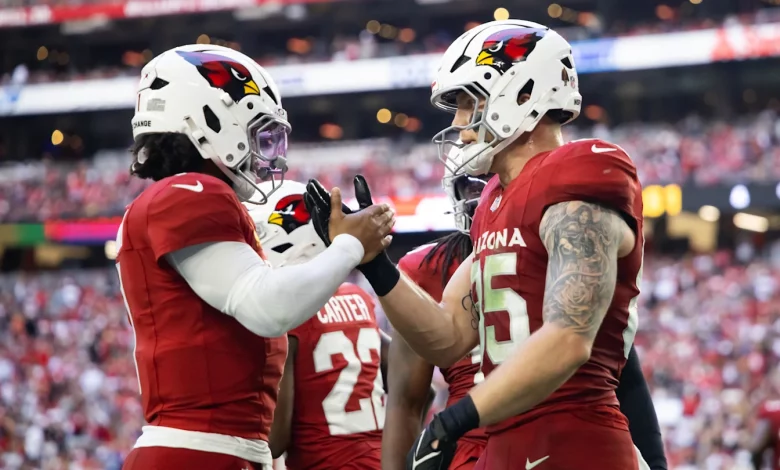
The Arizona Cardinals, a franchise with a storied history dating back to their founding in 1898 and their relocation to Arizona in 1988, has experienced a rollercoaster of successes and setbacks over the decades. While they have enjoyed moments of playoff contention and even Super Bowl appearances, recent years have marked a period of significant decline. This decline is characterized by a confluence of internal and external challenges that have severely impacted the team’s performance, overall stability, and long-term prospects. Understanding the depth and complexity of these issues requires a comprehensive examination of the franchise’s recent history, organizational decisions, player dynamics, coaching stability, and external factors influencing their trajectory.
Historical Context and Recent Performance Trends
Historically, the Arizona Cardinals have been considered an underdog franchise, often battling against larger, more resource-rich organizations. Despite this, they have managed to produce talented rosters, notable playoff runs, and star players like Kurt Warner, Larry Fitzgerald, and Patrick Peterson. The most prominent recent success came in the 2008 season when they reached Super Bowl XLIII, only to fall narrowly to the Pittsburgh Steelers. Since then, the team has struggled to sustain consistent success, often facing rebuilds and periods of mediocrity.
In recent seasons, the Cardinals have shown flashes of potential, including a standout 2015 season where they finished 13-3 and advanced to the NFC Championship Game. However, following that peak, the team’s performance has generally declined, marred by injuries, coaching changes, roster turnover, and external pressures. The 2020 season marked a significant downturn, with the team finishing 8-8, missing the playoffs, and facing criticism over their inconsistent play and lack of cohesion. The 2021 season saw some improvement, but not enough to solidify their status as a perennial contender.
The 2022 season marked a further decline, with the team finishing with a disappointing record and internal turmoil becoming evident. These trends indicate a downward spiral, driven by multiple intertwined factors that have eroded their competitive edge and organizational stability.
Core Issues Contributing to the Decline
Injuries and Player Turnover
One of the most immediate and impactful factors in the decline has been injuries. Key players, including star quarterbacks, receivers, and defensive stalwarts, have faced frequent injury setbacks, disrupting on-field chemistry and continuity. For example, the injury to quarterback Kyler Murray during critical stretches of recent seasons has hampered offensive productivity and team morale.
In addition to injuries, the team has faced significant roster turnover. High-profile departures, whether through trades, free agency, or releases, have left gaps that are challenging to fill. Maintaining a cohesive unit has become difficult, particularly when younger players are thrust into starting roles prematurely or when veteran leadership departs.
Coaching Instability and Strategic Challenges
Coaching stability is central to team success, and the Cardinals have experienced considerable turnover at the head coaching and coordinator levels. The firing of head coach Kliff Kingsbury after a series of underwhelming seasons exemplifies this instability. Frequent coaching changes often lead to inconsistent schemes, difficulty in developing players, and a lack of a unified team philosophy.
Furthermore, strategic challenges have emerged, with some criticizing the team’s offensive and defensive game plans as predictable or ineffective against top-tier opponents. The inability to adapt to evolving league trends, such as modern passing offenses or aggressive defensive schemes, has hampered the team’s competitiveness.
Leadership and Organizational Culture
Leadership at the executive and player levels plays a decisive role in team stability. The Cardinals have faced questions regarding their organizational culture, decision-making processes, and transparency. Some critics argue that inconsistent leadership and a lack of clear vision have led to poor roster management and an unstable environment.
The relationship between the coaching staff and front office has sometimes been strained, leading to disagreements over player development, draft choices, and in-game management. These internal conflicts can ripple through the team, affecting morale and focus.
Quarterback Play and On-Field Performance
Kyler Murray, the franchise quarterback, is both a symbol of the team’s future and a source of concern due to his injury history, inconsistency, and leadership questions. His performance fluctuations, combined with injuries and the team’s inability to surround him with sufficient talent or protection, have contributed heavily to the decline.
The quarterback position is vital in the NFL, and when struggles occur at this level, the entire team suffers. The lack of a reliable top-tier quarterback beyond Murray has limited the Cardinals’ offensive potential and made it difficult to execute winning strategies consistently.
Defensive Struggles and Lack of Depth
Defense has been another area of concern. The team has struggled to establish a dominant or even consistent defensive identity. Injuries to key defensive players, combined with ineffective schemes or poor execution, have left the team vulnerable against high-powered offenses.
Lack of depth on defense further exacerbates issues, especially when starters are injured or need rest. This deficiency makes it difficult for the team to maintain intensity throughout games and adapt to different offensive styles.
Drafting and Talent Acquisition Challenges
Effective talent acquisition through the draft and free agency is crucial for sustained success. The Cardinals have faced criticism for missed draft opportunities, poor evaluation, or over-reliance on high-profile players who do not perform as expected. These missteps have resulted in gaps across the roster, especially in the trenches and secondary positions.
The inability to develop young talent or retain promising prospects has hampered the team’s overall competitiveness and long-term stability.
External Pressures and Market Dynamics
External factors also influence the team’s performance and stability. Market pressures, fan expectations, and media scrutiny add layers of stress and distraction. The franchise’s location in a relatively less football-centric market compared to traditional NFL powerhouses can affect revenue, recruitment, and overall organizational confidence.
Additionally, competition within the NFC West division, featuring teams like the San Francisco 49ers, Seattle Seahawks, and Los Angeles Rams, has heightened the challenges for the Cardinals. These rivals have more consistent success, better-developed rosters, and more stable organizational structures, making it harder for Arizona to compete effectively.
Impact of the Decline on Team Performance and Stability
The cumulative effect of these issues has led to declining team performance. The Cardinals have experienced increased losses, reduced competitiveness, and diminished confidence within the locker room. This decline manifests in poor game execution, inability to close out close games, and vulnerability against elite opponents.
From a stability perspective, internal strife, leadership uncertainty, and roster instability threaten the long-term viability of the franchise. Players and coaching staff may become disillusioned or seek opportunities elsewhere, further weakening the team’s foundation. The organizational culture, which ideally fosters resilience and growth, risks becoming toxic or stagnant if these issues persist.
Future Outlook and Potential Remedies
While the current state appears bleak, opportunities for turnaround exist. Addressing core issues requires a multifaceted approach:
Leadership Stability: Hiring a stable coaching staff with a clear vision can foster a cohesive culture and strategic consistency.
Roster Management: Prioritizing talent development, strategic drafting, and prudent free-agent acquisitions can rebuild depth and quality.
Injury Prevention and Player Health: Implementing advanced medical protocols and load management strategies can enhance player durability.
Offensive and Defensive Scheme Evolution: Adapting to modern NFL trends and optimizing scheme fit for personnel can improve on-field performance.
Organizational Transparency and Culture Building: Cultivating a transparent, accountable environment encourages player development and organizational loyalty.
Focus on Youth Development: Investing in the draft and player development pipeline ensures a sustainable talent pool.
The franchise’s future depends on their ability to learn from past mistakes, adapt to evolving league dynamics, and rebuild trust among players, staff, and fans.
The Arizona Cardinals are experiencing a profound decline driven by a complex interplay of injuries, coaching changes, organizational issues, personnel challenges, and external pressures. These factors have combined to diminish their on-field performance, erode team stability, and threaten their long-term prospects. Overcoming these hurdles will require strategic leadership, organizational cohesion, and disciplined management. If addressed proactively, the franchise can chart a course toward resurgence; if neglected, the decline may deepen, further compromising their standing within the league. As one of the NFL’s historically underdog franchises, the Cardinals’ current struggles serve as a poignant reminder of the fragile balance between success and failure in professional football.


